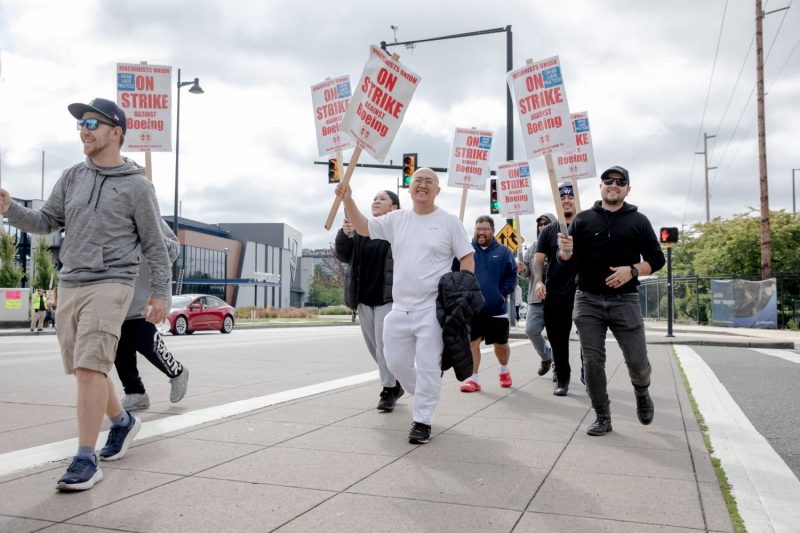
Boeing’s Bold Move: Massive Furloughs as Machinist Strike Hits
Boeing Initiates Furloughs for Tens of Thousands of Employees Amid Machinist Strike
The ongoing machinist strike at Boeing has prompted the aerospace giant to implement significant furloughs affecting tens of thousands of its employees. As the strike enters its third week, the impact on Boeing’s operations and workforce is becoming increasingly apparent. The company’s decision to furlough employees is a direct response to the disruption caused by the strike, which has hindered production and delivery schedules for critical aircraft components.
The machinist strike, which began in response to disagreements over pay, benefits, and working conditions, has created a ripple effect throughout Boeing’s supply chain and manufacturing facilities. The strike has disrupted the production of key aircraft models, including the 737 MAX and 787 Dreamliner, leading to delays in customer deliveries and revenue losses for the company.
Boeing’s furloughs come as a stark reminder of the challenges facing the aviation industry in the wake of the COVID-19 pandemic. The ongoing global health crisis has already significantly impacted air travel demand and the financial stability of airlines, which in turn has affected aircraft manufacturers like Boeing. The machinist strike, coupled with the economic repercussions of the pandemic, has further exacerbated Boeing’s difficulties in maintaining its production capabilities and meeting customer demands.
The furloughs at Boeing highlight the toll that labor disputes can take on both employees and the company itself. Furloughed employees face uncertainty about their future employment and financial security, while Boeing grapples with the operational disruptions and financial implications of reduced workforce availability. The situation underscores the importance of effective labor-management relations and timely resolution of disputes to ensure the sustainable operation of critical industries like aerospace.
As the machinist strike continues and Boeing navigates the challenges posed by the furloughs, the company faces a critical juncture in maintaining its position as a global leader in the aerospace industry. The resolution of the strike and the successful management of employee furloughs will be crucial in determining Boeing’s ability to recover from the setbacks caused by the labor dispute and economic downturn.
In conclusion, Boeing’s decision to furlough tens of thousands of employees amid the ongoing machinist strike underscores the complex interplay between labor relations, production disruptions, and economic pressures in the aerospace industry. The furloughs represent a significant development in the evolving dynamics of the strike, highlighting the far-reaching consequences for both Boeing and its workforce. Moving forward, the resolution of the strike and the effective management of furloughed employees will be essential for Boeing to navigate the current challenges and secure its long-term viability in a competitive marketplace.
